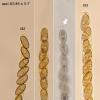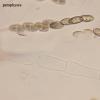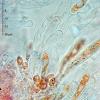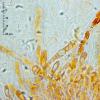
30-12-2025 16:44
Pascal DucosBonjour,Une anamorphe rose stipitée, très nombre

30-12-2025 17:14
 Bernard CLESSE
Bernard CLESSE
Bonjour à toutes et tous,Pourriez-vous aider Albe

29-12-2025 10:15
Hulda Caroline HolteHello, I found and collected this propoloid ascom

30-12-2025 09:04
Hello.A Pyrenomycete sprouting sparsely but very d

29-12-2025 17:44
Isabelle CharissouBonjour,J'aimerais savoir si d'autres personnes au

12-11-2021 00:03
Lepista ZacariasHi everybody,A week ago in my fiels trip I noticed

29-12-2025 17:12
 Bernard CLESSE
Bernard CLESSE
Bonjour à toutes et tous,Pourriez-vous m'aider à
I'd like to know your opinion about this 'ceratostomelloid' fungus growing on rotten wood of Fagus sylvatica. The beaked, scattered, glabrous, inmersed perithecia are up to 1 mm high with only the long necks erumpent across the surface.
The asci are cylindrical, shortly stipitate, 63-85 x 6-7 microns, with an conspicuous apical apparatus IKI negative and 8 ascospores obliquely uniseriate. Paraphyses septate tapering at the end. Ascospores 8.5-11.5 x 4.3-4.9; Q = 1.96-2.58, allways 2-guttulate, smooth, maybe porate (?).
I think this fungus agrees better with Xylomelasma than Ceratostomella. What do you think?
Thanks again

Xylomelasma sordida seems to be a good match. Did you observe the peculiar ascogenous cells at the base of the asci, as described by Réblova? You have to make a very thin slide to see them, hard job!
Saludos,
Jacques








